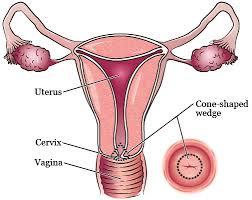How to Treat Nongonococcal Nonchlamydial Cervicitis?
Cervicitis is a cervical inflammation characterized by abnormal secretion of cervical mucus and increased cervical fragility. Chlamydia trachomatis and Neisseria gonorrhoeae are two of the most common pathogens causing cervicitis. These two causes account for about 50% of cervicitis, while about 50% of cervicitis remains unknown whch is NGNCC.
Possible causes of NGNCC include Mycoplasma genitals, Ureaplasma urealyticum, Trichomonas vaginalis and vaginal flora disorders associated with bacterial vaginitis. For cases suspected of genital tract mycoplasma or viral infection, due to the lack of accurate detection of pathogens and unclear pathogenic process, clinical treatment is very complex, and therefore there are no authoritative treatment guidelines for this disease.

In order to evaluate the treatment of NGNCC, Professor Mattson of the Affiliated Hospital of Drexel University and others collected 61 eligible patients from April 2008 to March 2014 at Drexel Vaginitis Center. The relevant literature was published in the recent Journal of Low Genital Tract Disease.
Patients included in the statistics should meet the clinical diagnostic criteria for cervicitis (increased cervical fragility and corresponding secretion characteristics) and vaginal secretions were not detected Neisseria gonorrhoeae, Chlamydia trachomatis, and Trichomonas vaginalis. Statistics showed that the average age of the patients was 31 years old, and more than half of them were non-fertile women.
Initially, all of the patients were treated with first-line antibiotics (azithromycin, doxycycline, and moxifloxacin), with an effective rate of 65.5%. The remaining 19 patients had to use other treatments because of the ineffectiveness of first-line treatment, including second-line antibiotics, hormone therapy, vaginal hormone use, silver nitrate, cryotherapy, and LEEP. The effective rates were 57.9%, 50%, 0%, 100%, 0%, 100% respectively.

In conclusion, the overall cure rate of these 61 patients was 93.4%. Researchers found that the incidence of NGNCC was not very high. In six years, the center treated only 61 patients. More than a quarter of the patients were infected with Ureaplasma. Ureaplasma mainly includes Ureaplasma urealyticum and microureaplasma urealyticum. Among women who have a frequent sex life, the overall infection rate is as high as 12%-64%.
However, there is no reasonable hypothesis to prove that cervicitis is associated with cervicitis. At the same time, the researchers did not find that Ureaplasma urealyticum positive in nucleic acid amplification test was associated with effective antibiotic treatment. Although the etiology of NGNCC is still unclear, the vast majority of patients can get good treatment through symptomatic treatment.
This study confirms that antibiotics are very effective initial treatment. For patients who are ineffective in antibiotics, medical staff should consider whether there are other pathogenic factors of chronic cervicitis, such as inflammation or cervical ectropion. There is no uniform standard for the second-line treatment of NGNCC, and switching to other types of antibiotics is one of the most effective schemes.

antibiotics
Whether to use other non-antibiotic treatments or not is still a controversial issue. Because the number of cases in this study is too small, it can not explain whether it is effective. If patients are not sensitive to antibiotics, they can be treated with silver nitrate therapy, hormone therapy, cryotherapy, conservative natural medicine such as Fuyan Pill or even LEEP operation. At last, best wishes for your recovery.
What Should Be Responsible for Yellow Vaginal Discharge?
previous pageHow Can Moderate Cervicitis Get Away from Me?
next page
You may also be interested in
Testimonials
- Adenomyosis with Ureaplasma Urealyticum Cured by Fuyan Pill
- Tubal blockage with hydrosalpinx can be cured by TCM shortly
- Fuyan Pill Helps A woman with Adenomyosis Get Pregnant
- A Woman with Hydrosalpinx Is Cured with Fuyan pill
- Pelvic Inflammatory Disease Testimonials
- Irregular Vaginal Bleeding and Endometrial Thickening Cured by Fuyan Pill
- Pruritus Vulvae and Frequent Urination: Mycoplasma Infection Cured after 2 Courses



